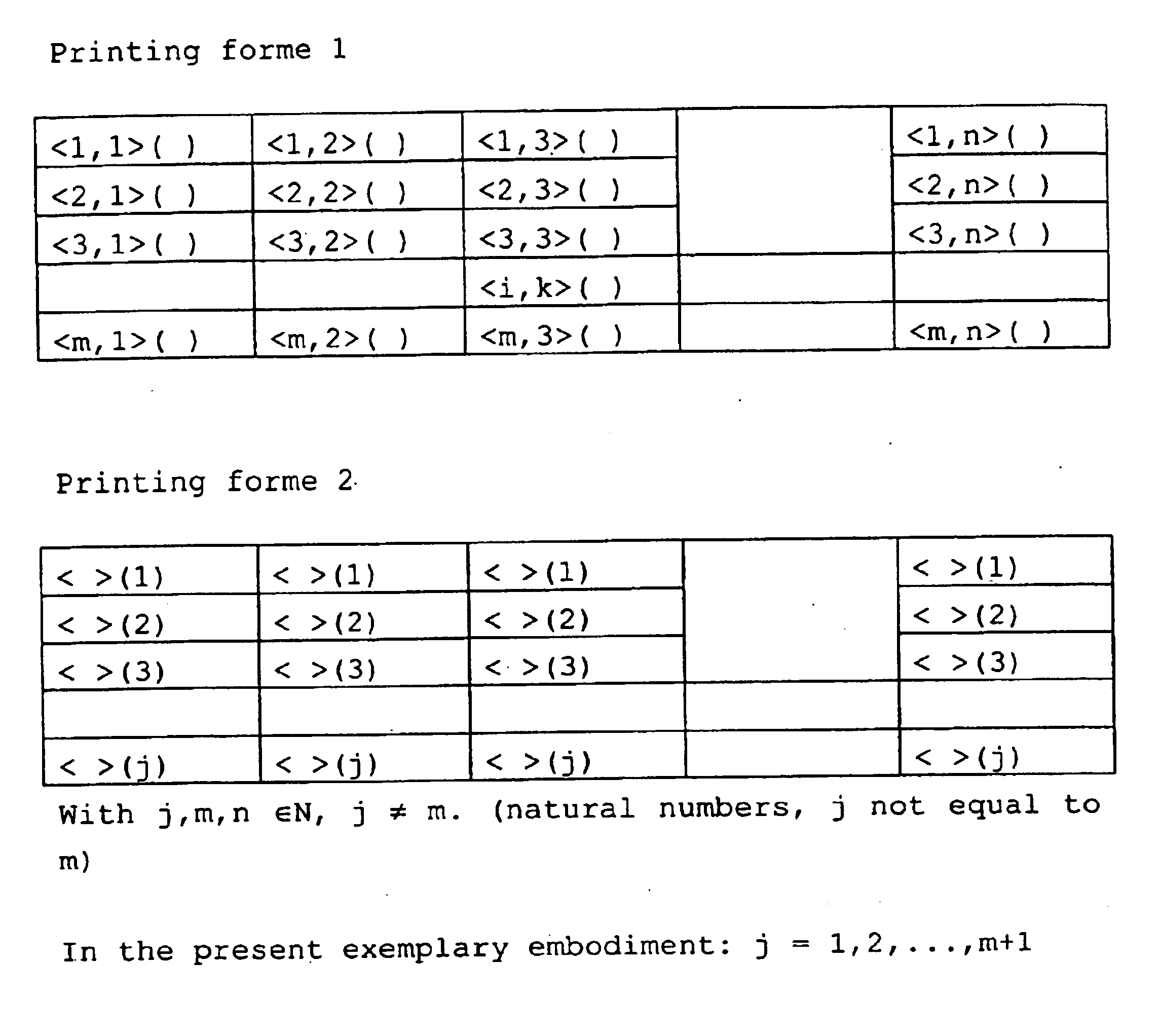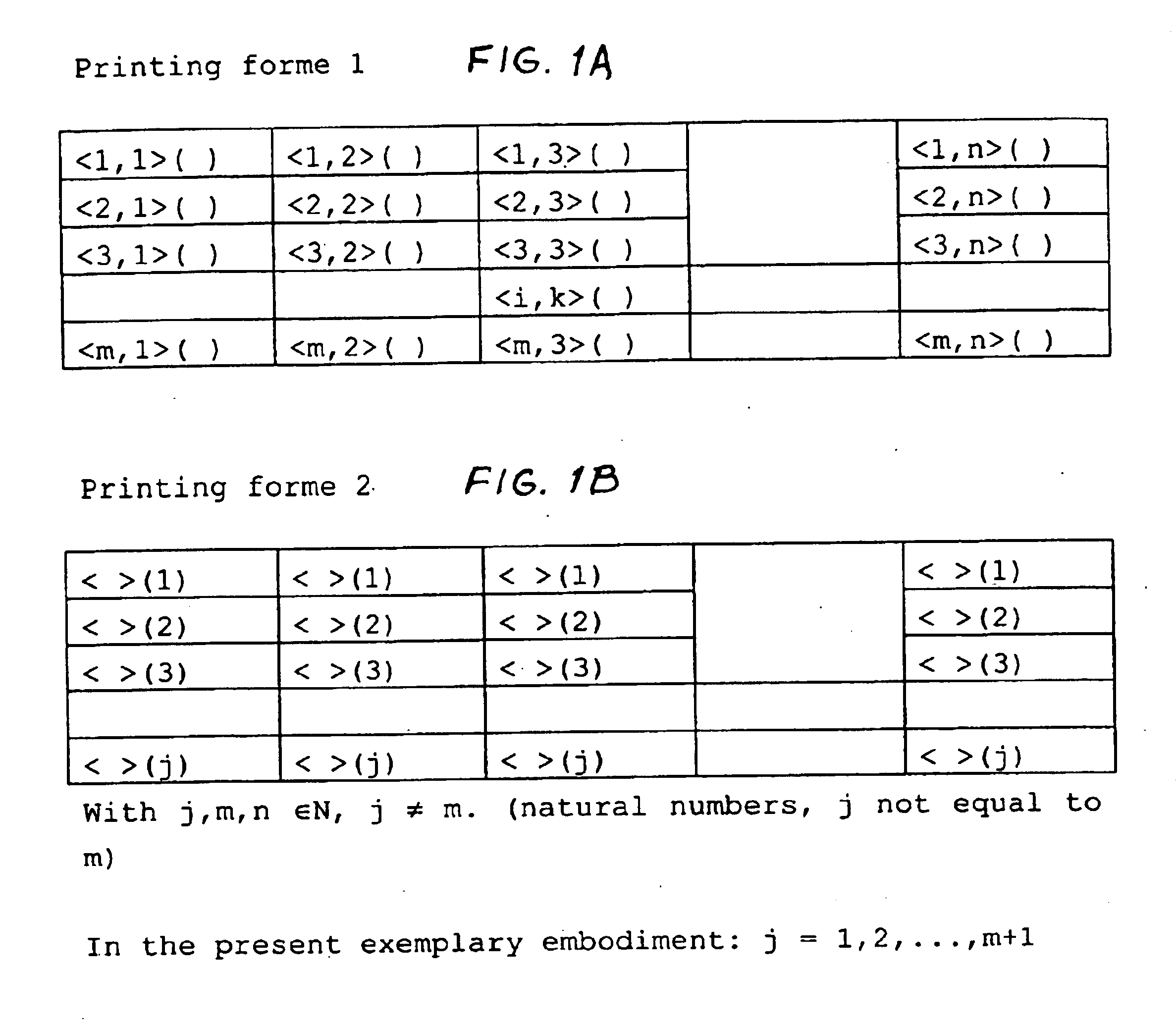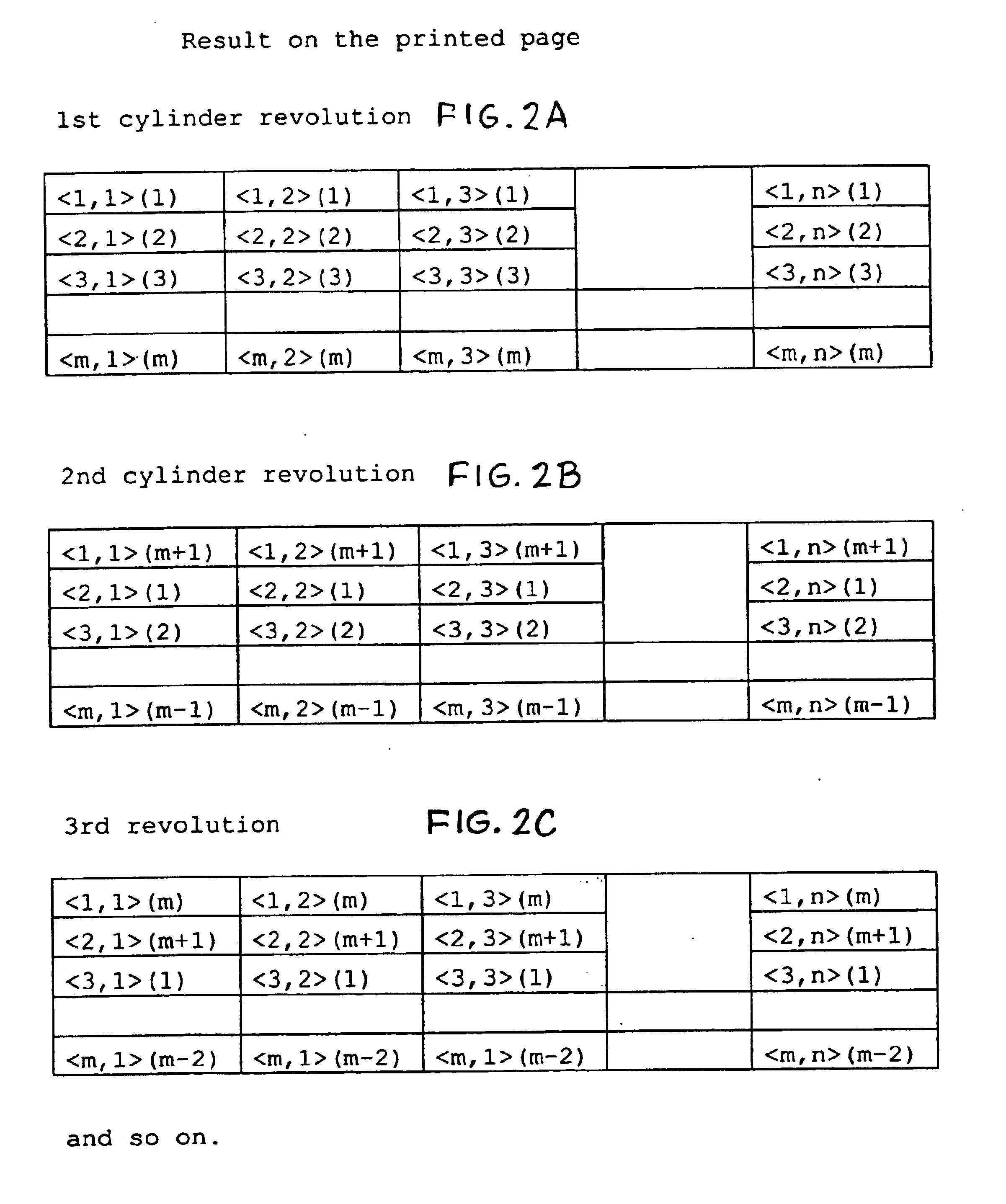Method of printing unique prints or individually assembled printed products on rotary printing machines
a printing machine and unique technology, applied in the field of conventional printing on a rotary printing machine, can solve the problems of comparatively high printing speed of conventional printing, deficiency of conventional printing or therefore also of "
- Summary
- Abstract
- Description
- Claims
- Application Information
AI Technical Summary
Benefits of technology
Problems solved by technology
Method used
Image
Examples
Embodiment Construction
In a first exemplary embodiment of the method according to the invention, provision is made for at least two printing-forme cylinders with different circumferences to be used, in such a way that the first printing forme is produced from portions of information (ask) in an A(.sub.m,n) matrix arrangement with the line number i=1,2, . . . ,m and the column number k=1,2, . . . ,n, and the second printing forme is produced from portions of information (b.sub.jk) in a B.sub.(m+1,n) matrix arrangement with the line number j=1,2, . . . ,m+1 and the column number k=1,2, . . . ,n so that during the transfer of the printing image from both printing formes to the printing material, the portions of information are combined with each other in such a way that during each revolution of the printing-forme cylinders in each case one segment comprising the element (a.sub.ik) and an element (B.sub.jk) changed by at least one line number j is printed, until after m+1 printing-forme cylinder revolutions,...
PUM
 Login to View More
Login to View More Abstract
Description
Claims
Application Information
 Login to View More
Login to View More - R&D
- Intellectual Property
- Life Sciences
- Materials
- Tech Scout
- Unparalleled Data Quality
- Higher Quality Content
- 60% Fewer Hallucinations
Browse by: Latest US Patents, China's latest patents, Technical Efficacy Thesaurus, Application Domain, Technology Topic, Popular Technical Reports.
© 2025 PatSnap. All rights reserved.Legal|Privacy policy|Modern Slavery Act Transparency Statement|Sitemap|About US| Contact US: help@patsnap.com



